“Don’t give us food packets, we can buy rice from the ration shop. Find a solution for the flood waters!” said the women gathered in a group in Semmanjeri.
That area, 30 kilometres south of Chennai city, on the Old Mahabalipuram Road, in Kancheepuram district, was severely flooded on November 25, 2020.
The submergence was neither new nor unusual for the residents of this low-lying locality. In 2015, when Chennai went under water in a historic and notoriously mismanaged flood, so did Semmanjeri. But in some neighbourhoods at least, the streets and storm water drains seemed to be somewhat better prepared in the following years.
Not in the Semmanjeri (or Semmancheri) housing board localities – neglected perhaps because they are home to families displaced due to various urban ‘development’ and infrastructure projects, over time. Many of the residents here are domestic workers in Chennai city, sanitation workers, autorickshaw drivers, or doing other jobs in the informal sector.
So when Cyclone Nivar, a beast of a storm, struck Tamil Nadu, depositing a high of around 250 mm of rain in Cuddalore and over 100 mm in Chennai during landfall, the rain water rushed inside the houses in Semmanjeri and stayed on the streets – a foot indoors, two outdoors.
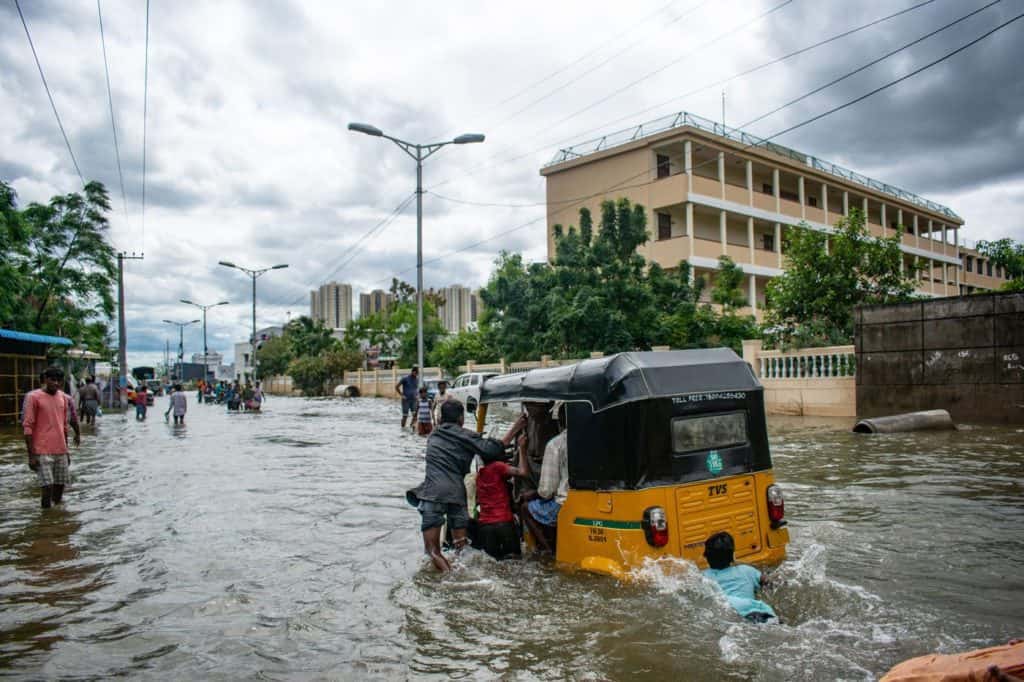
We visited Semmanjeri on November 27, a day after the cyclone crossed the coast south of Chennai, near Puducherry (11:15 pm on November 25), killing three and displacing 1.38 lakh people, damaging crops on 16,500 hectares (said several newspaper reports) and flooding coastal cities and towns..
For the nearly 30,000 residents of Semmanjeri, it was a familiar sight – water that rushed into homes, destroying their personal belongings, shutting down the electricity supply for days, forcing them to stay with upstairs neighbours. Toilets were flooded, sewers overflowed; snakes and scorpions wandered indoors and the walls of homes crumbled.
Why did this happen? Not just because it’s a low-lying area. The problem is compounded by the newer high-rises, which further cut off already inadequate avenues of water drainage. Local lakes overflow too, reservoirs in the state release excess water – all of it adds to the recurring flooding. Plus the very high walls of the resettlement colonies that kept it all in – some nearly 10 feet tall – whose purpose, perhaps, was to make the low-income residents invisible from the outside.
So every time there is a big rain, the streets turn into rivers, vehicles float like boats. Kids bag fish with cloth nets right in the middle of the road, and their mothers spend the day emptying their houses of accumulated water, one futile five-litre bucket at a time.
“We get a tsunami here every year, and yet nobody visits us, except to ask for votes,” the women said. “We moved here in 2005 from Foreshore Estate, Urur Kuppam and other areas in Chennai. Those who displaced us, the authorities and politicians, they live happily in maaligais [large houses]. Look at us!’
The women and kids all stood in foot-high water, asking for very little – a way for that water to drain out.
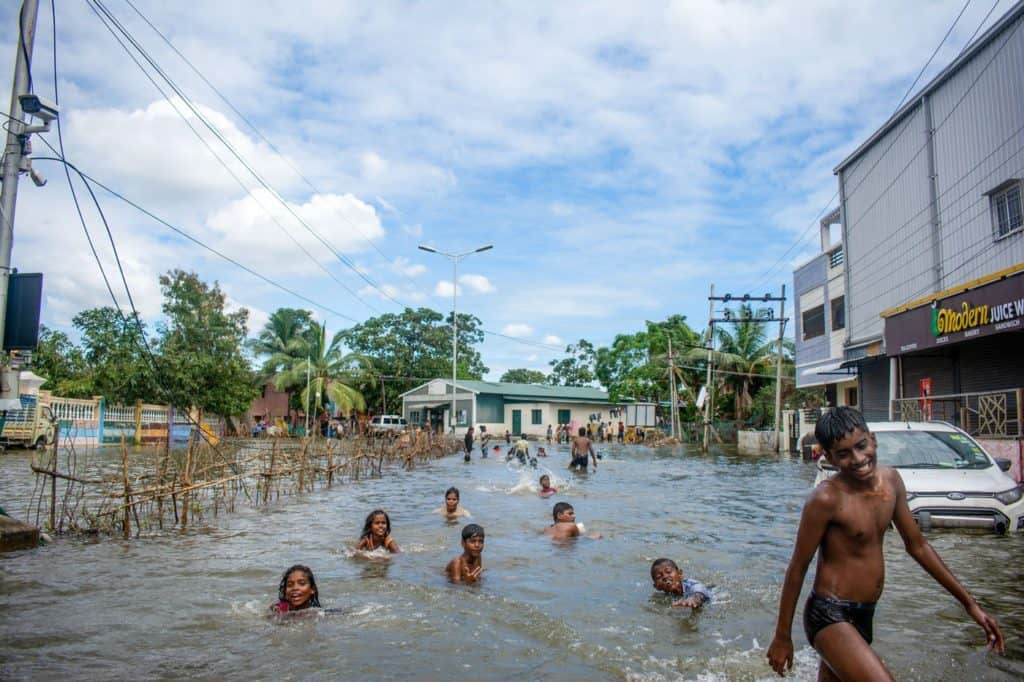


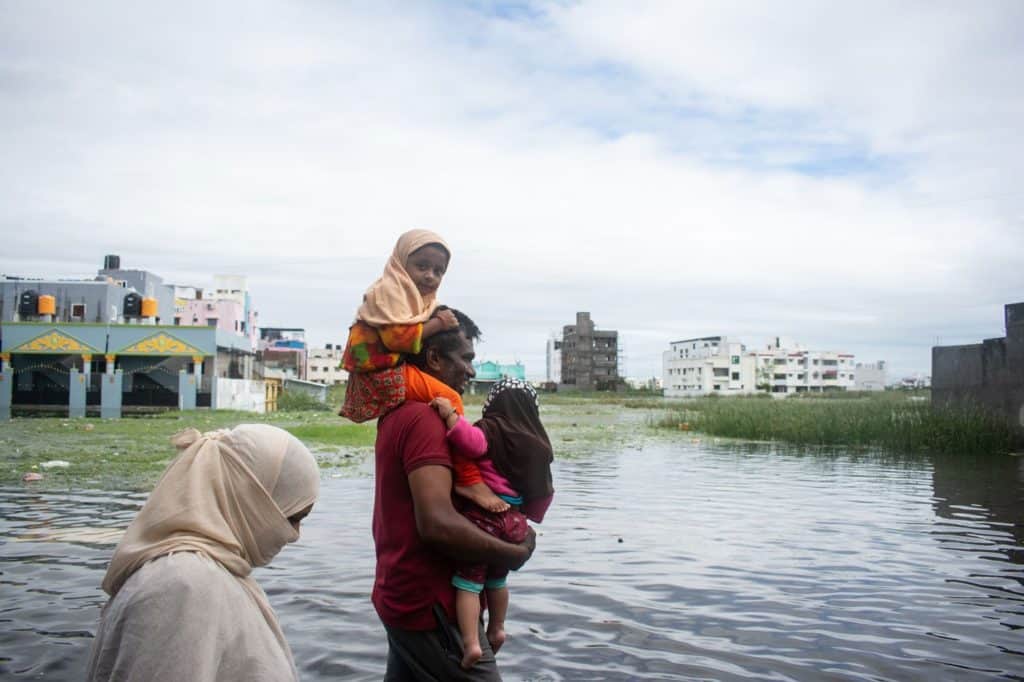

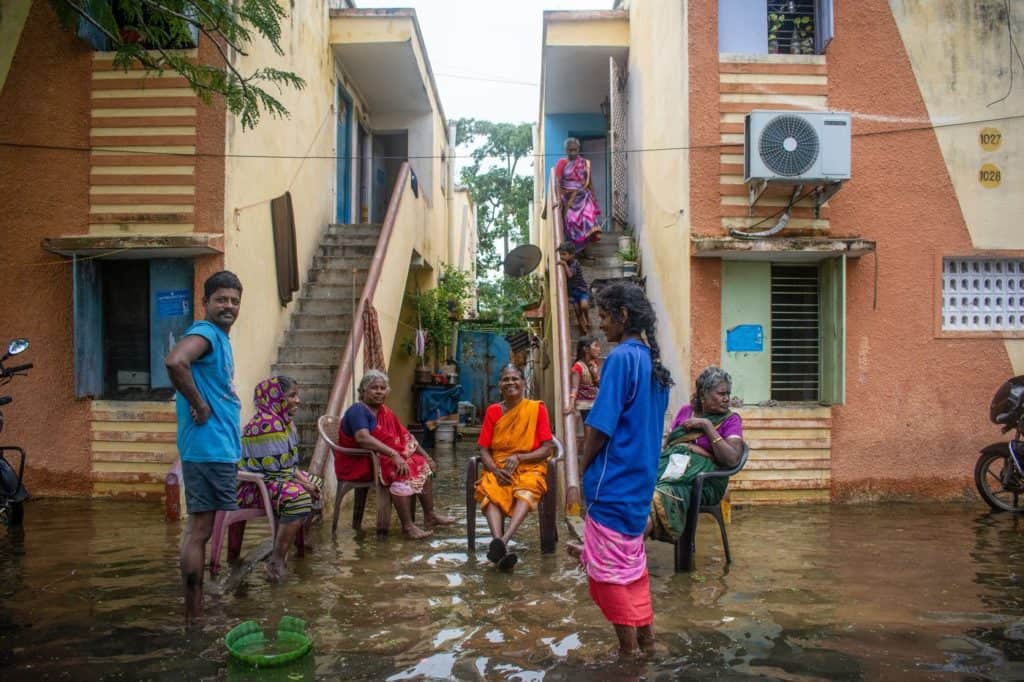
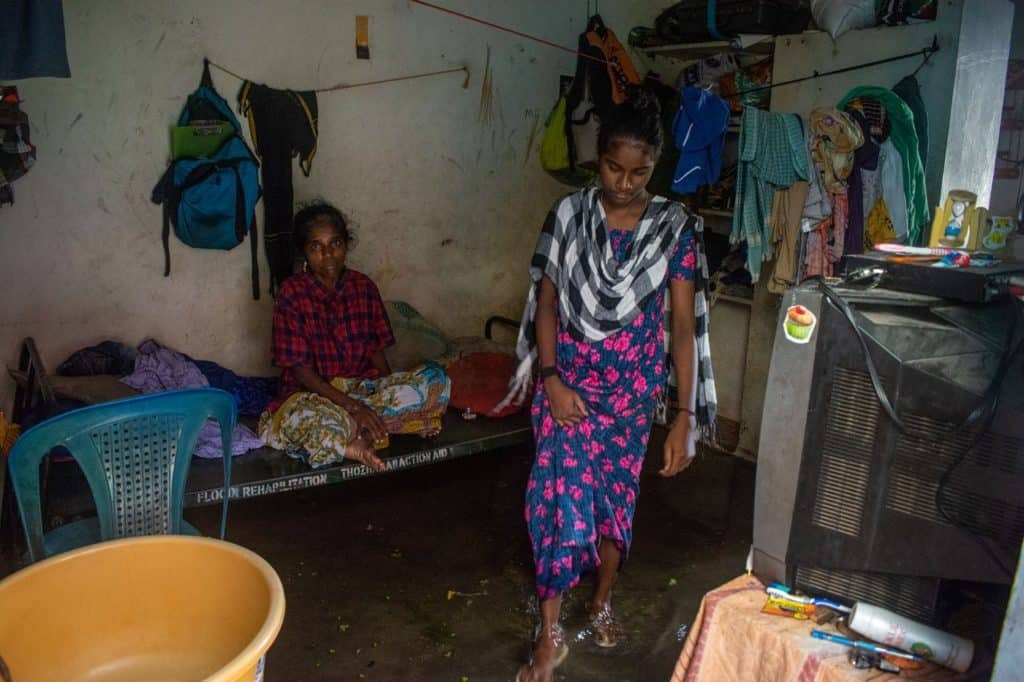
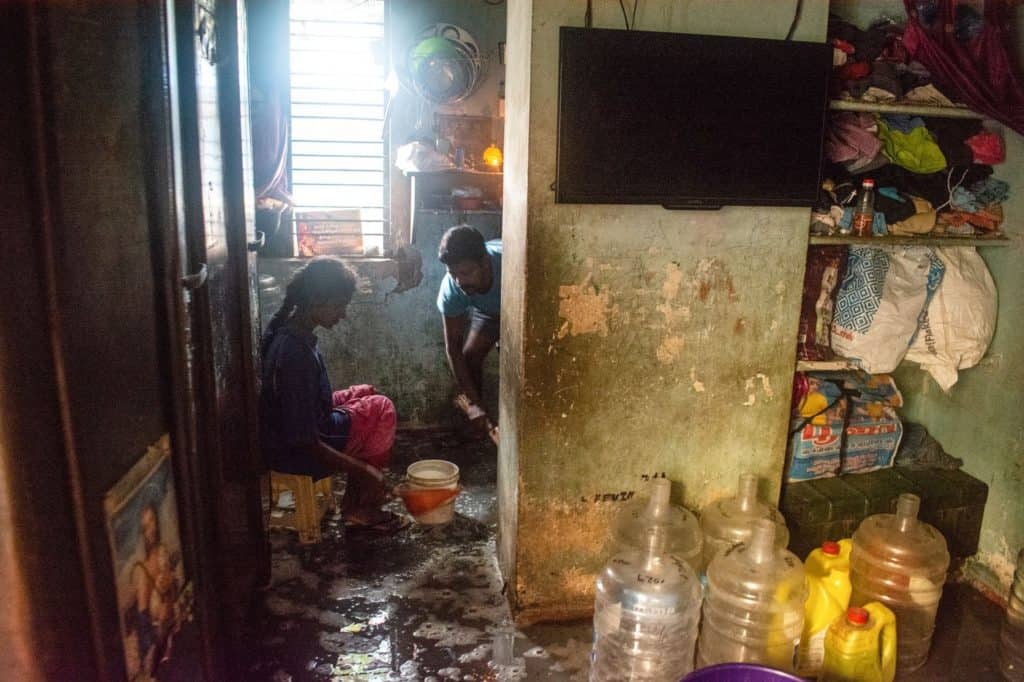
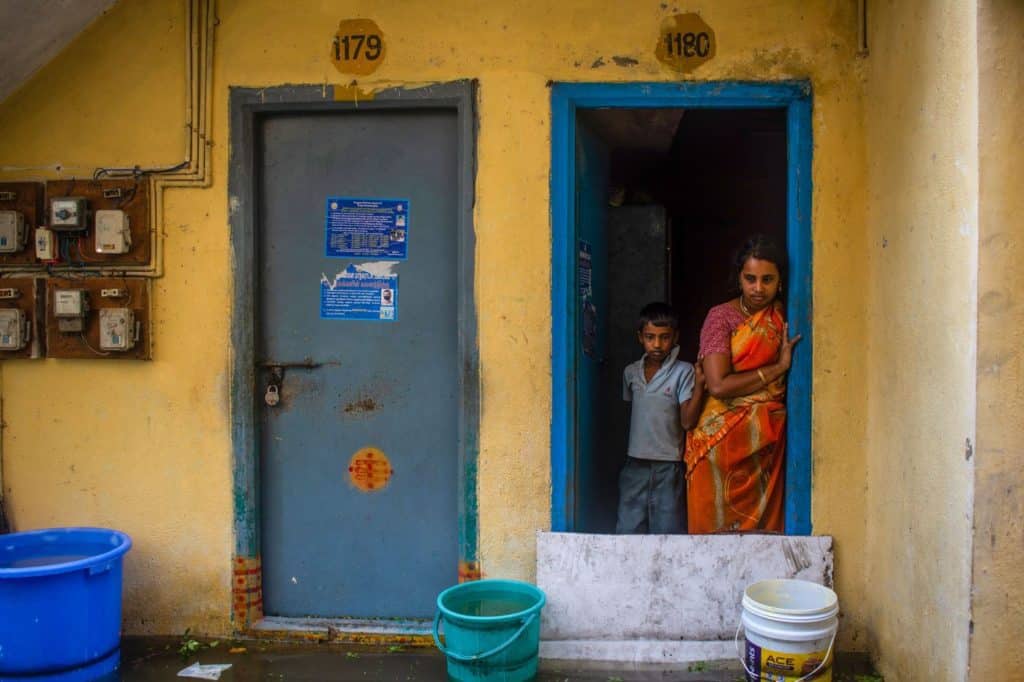

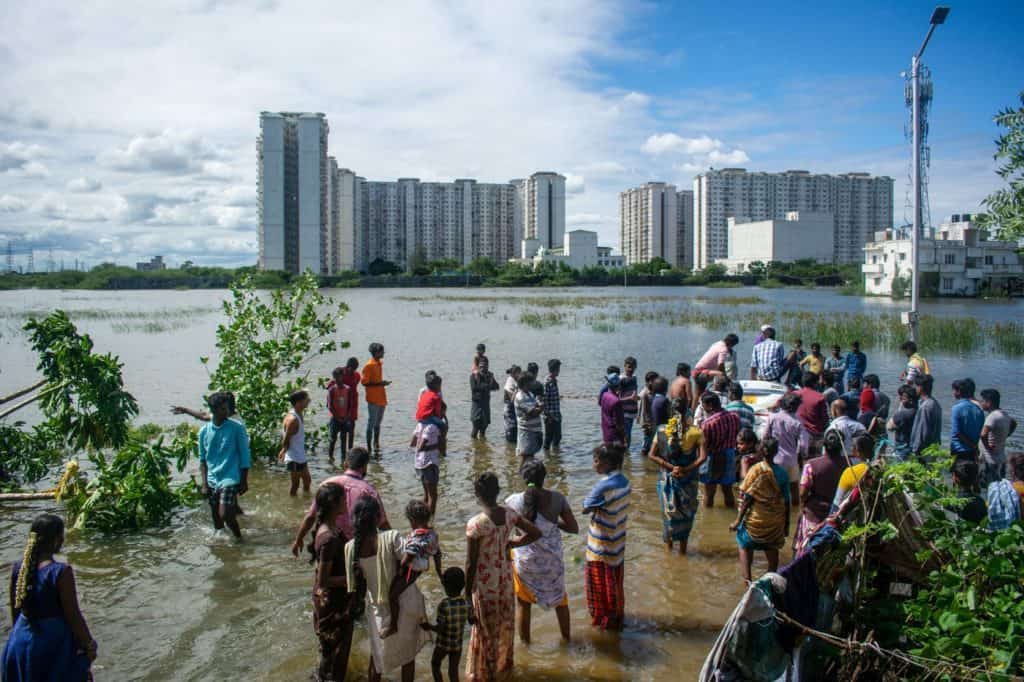
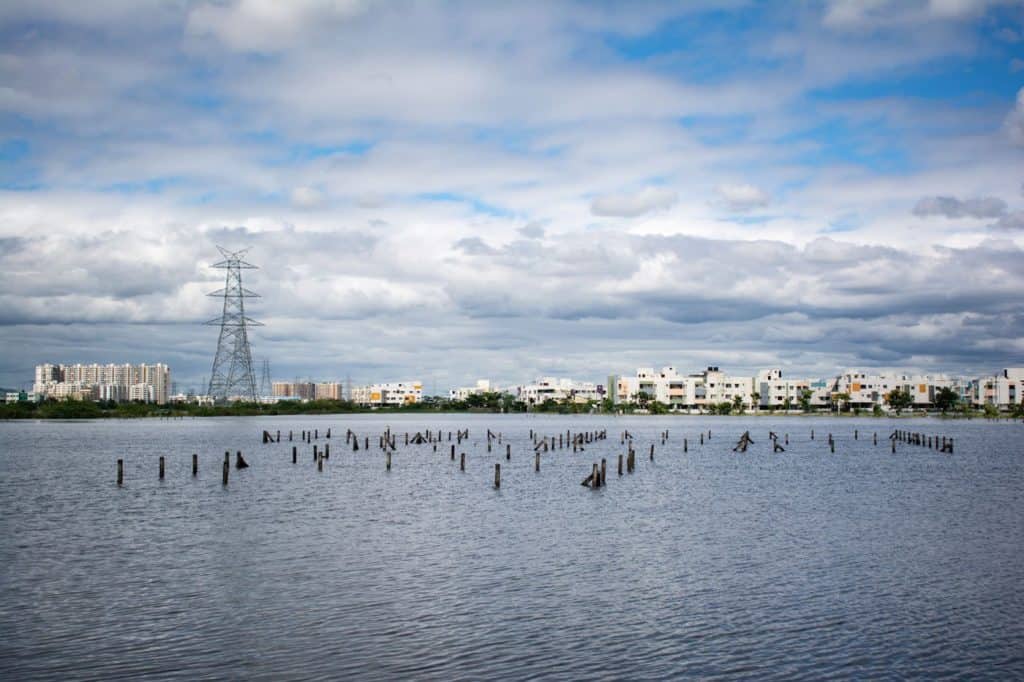
[This article was originally published in the People’s Archive of Rural India on December 8, 2020]